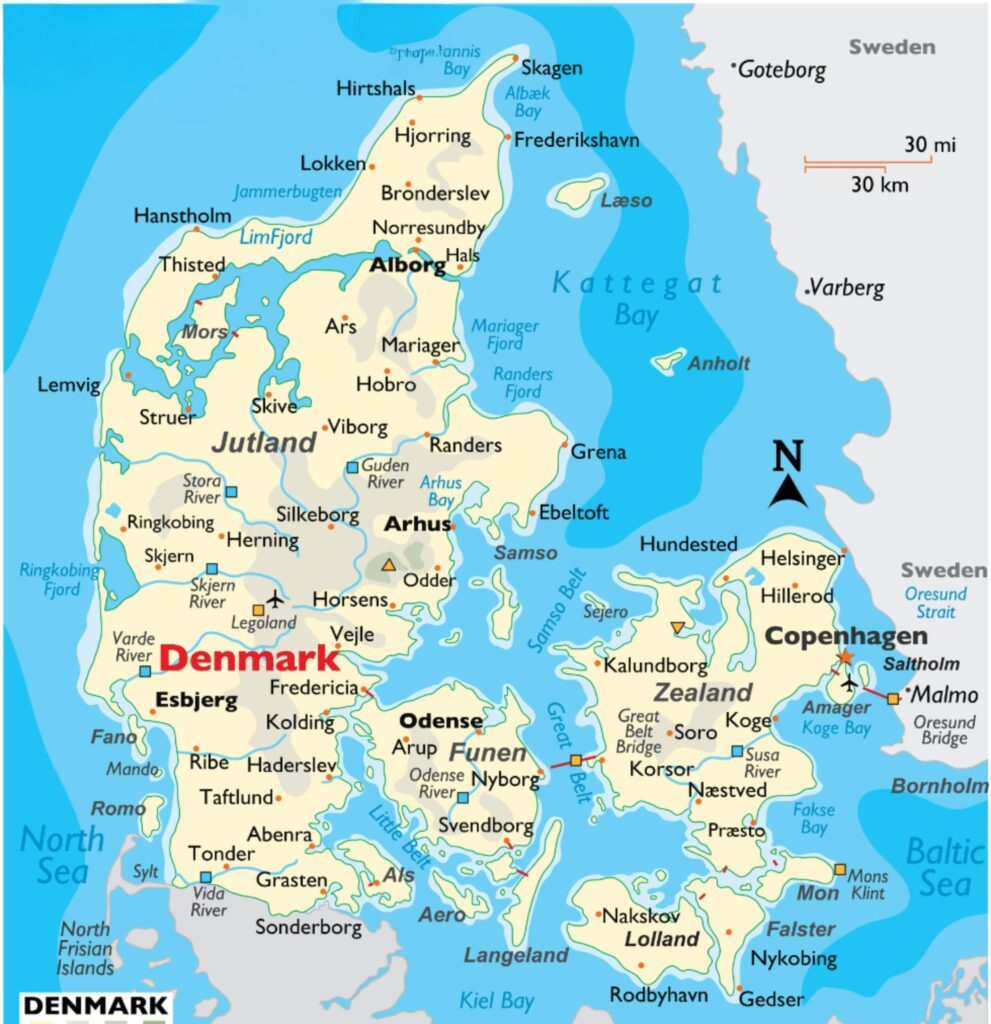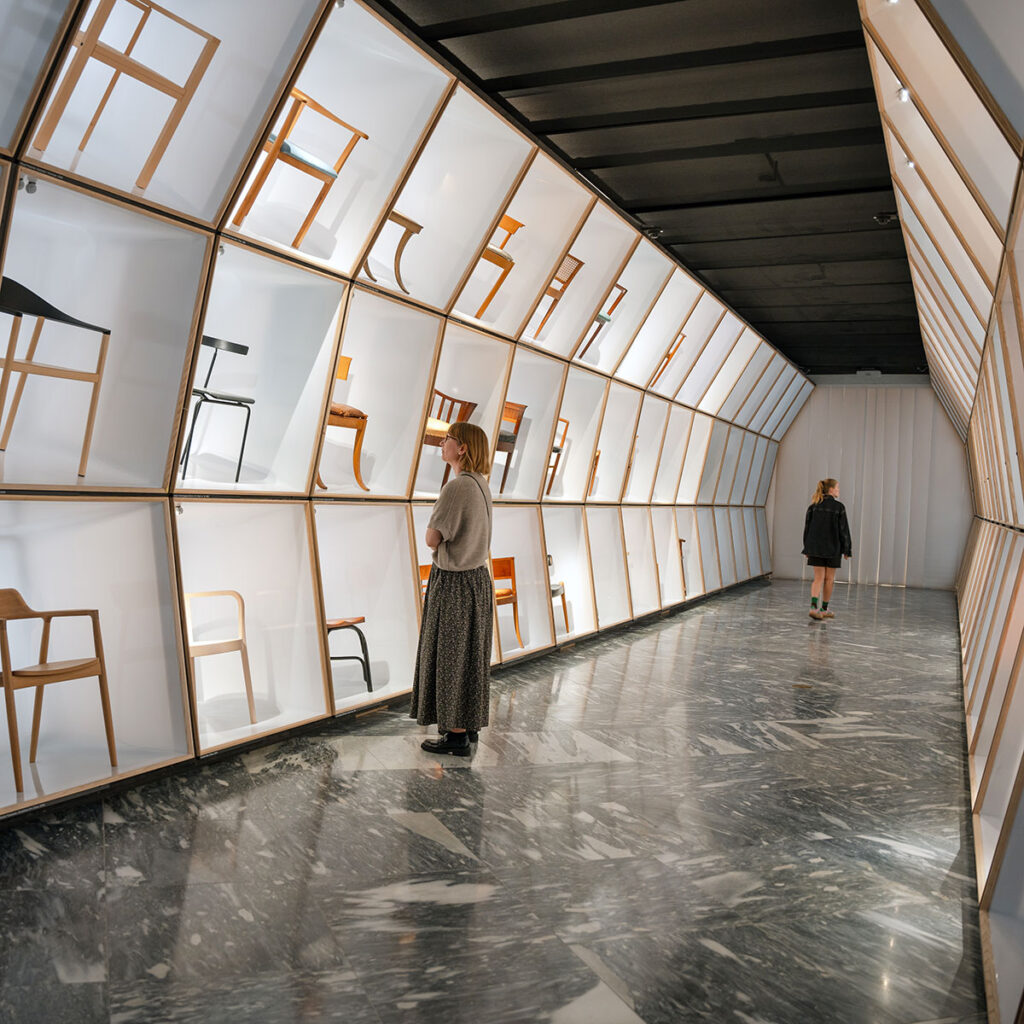Denmark is a Nordic country, also known as Scandinavia, located north of Germany and south of Sweden and Norway. Its population is about 6 million.
In 1973, Denmark, together with Greenland (but not the Faroe Islands), became a member of the European Union but negotiated certain opt-outs, such as retaining its own currency, the Danish krone (DKK), which is pegged to the EUR.
In Denmark, the monarchy and democracy coexist peacefully and complement each other. The monarch, represented by King Frederik and Queen Mary, symbolizes the continuity and history of the Danish state, while the elected government makes decisions and governs the country.
The Kingdom of Denmark consists of over 1,400 islands. I will just mention the three main islands: Jutland (Jylland) is in the south, bordering Germany and connected to the rest of Europe. The second-largest city in Denmark, Aarhus, is located on the east coast.
Funen (Fyn) is the island between Jutland and Zealand (Sjælland), connected by the Lillebælt (Little Belt) and Storebælt (Great Belt) bridges. On this island is the birthplace of the world-famous writer Hans Christian Andersen (Odense), which is the third-largest city in Denmark.
Zealand (Sjælland) is Denmark’s largest island, home to the capital, Copenhagen, which features main tourist attractions such as the famous Little Mermaid statue and the royal castle.

If you want to start a casual conversation with a Dane, talk about the weather. The weather in Denmark is generally temperate, meaning you won’t find extreme heat or cold. Winters hover around 0 to 5 degrees Celsius (32°F to 41°F), so while it gets cold, you usually won’t see heavy snowfall.
Summers are mild, with temperatures between 15 and 20 degrees Celsius (59°F to 68°F). Occasionally, it can get warmer, but it’s for a short period. There is a new concept called “Coldcation,” where people seek to visit places with cooler climates to avoid extreme heat in the summer. Denmark offers pleasant temperatures for this.
Denmark’s air quality is very good, thanks to its location by the sea and its focus on sustainability. The AQI (Air Quality Index) usually ranges between 10 and 50, indicating “Good” air quality. Copenhagen, being the capital and a larger city, has slightly more pollution, mostly from cars. However, even then, it’s nothing compared to other major cities around the world. For comparison, the AQI in China frequently exceeds 100 in major cities, indicating “Unhealthy” or “Hazardous” conditions.
Outside the cities, especially in rural and coastal areas, the air is clean and fresh! Denmark has truly committed to green living, ranking high in environmental efforts and investing significantly in renewable energy, such as wind power.
Danish culture values simplicity, community, and a strong connection to nature. Central to this is the concept of “hygge,” a Danish word meaning coziness and contentment, often enjoyed with family or friends, good food, and a warm atmosphere.
Danish design is world-renowned for its minimalism, functionality, and timeless elegance. Iconic Danish architects, like Jørn Utzon, designer of the Sydney Opera House, and Arne Jacobsen, known for the Egg Chair, have made significant global contributions.
Besides architecture, Denmark is known for producing a variety of high-quality and innovative products. Some of the most famous Danish products include Lego (building blocks loved by children and adults worldwide), Carlsberg beer, Pandora jewelry, ECCO footwear, Royal Copenhagen porcelain and fine china, and Lurpak Danish butter.
Some of the Danish companies that have a global presence and strong reputation are Maersk, the world’s largest shipping company; Novo Nordisk, specializing in diabetes care; Vestas, a wind turbine manufacturer; Bang & Olufsen, known for audio and visual products; and Danfoss, which specializes in energy-efficient solutions.
